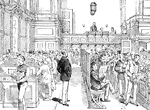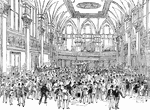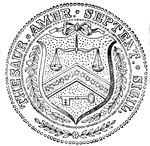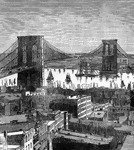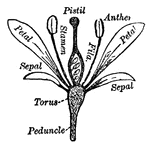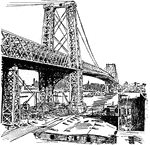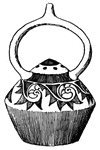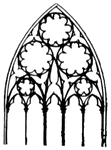
The Draft Riots in New York - The Battle in Second Avenue
Rioting in New York City after passage of an unpopular draft.
New East River Bridge, NY
The New East River Bridge is located in New York. It is often called the Brooklyn Bridge. It is the…
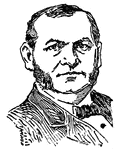
Roswell P. Flower
(1835-1899) In 1881 Flower was elected into congress and in 1891 became governor of New York.
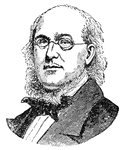
Horace Greeley
Horace Greeley was a journalist and became assistant editor of the "Northern Spectator." Greeley also…
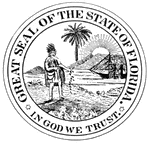
Florida Seal
The former Great Seal of Florida, featuring an indian, palm tree, the sun, and some uncharacteristic…

The Sixth regiment
Thousands of patriotic citizens filled every available space in the big railroad station in Jersey City…

Advance of the Federal Army towards Yorktown
When General McClellan reached Locst Hill, on april 2nd, 1862, he found fifty-eight thousand men and…

Paul Ansel Chadbourne
Portrait of Paul Ansel Chadbourne, an American educator. Born in New Berwick, ME., Oct. 21, 1823. Died…
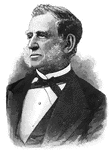
William Earl Dodge
Born in Hatford, Conn., Sept. 4, 1805; died in New York City, Feb. 9, 1883. First director of the Erie…

East River Bridge
The suspension-bridge over the strait called the East river, which seperates New York and Brooklyn was…

Discovery of a Confederate Battery at Messech's Point
The activity of the Confederates on the Potomac and the confluent rivers was almost incredible. In one…
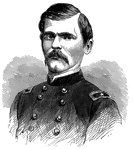
General George C. Strong
At the assault on Fort Wagner, July 18, he was mortally wounded. He was at once removed to New York…

Bolivian Cloth
Bolivian fabric pattern sketched in the American Museum of Natural History in New York.

Mexican Terra-Cotta Head
Mexican Terra-Cotta Head sketched in the American Museum of Natural History in New York.
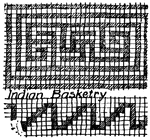
Basketry Patterns
Native American basketry patterns sketched in the American Museum of Natural History in New York.
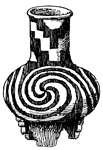
Mexican Jar with Spirals
Mexican jar with spiral design sketched in the American Museum of Natural History in New York.

Mexican Jar with Serpant
Mexican jar with serpent design sketched in the American Museum of Natural History in New York.

Mexican Bowl
Mexican bowl with spirals and zigzags sketched in the American Museum of Natural History in New York.
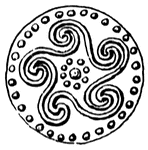
Peruvian Gold Disk
Peruvian gold disk sketched in the American Museum of Natural History in New York.

Peruvian Fabric Design
Peruvian fabric design sketched in the American Museum of Natural History in New York.
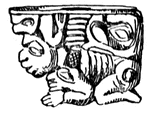
Mexican Pipe Bowl
Mexican stone pipe bowl sketched in the American Museum of Natural History in New York.
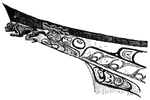
Alaskan War Canoe
Prow of an Alaskan war canoe sketched in the American Museum of Natural History in New York.

Alaskan War Canoe
Stern of an Alaskan war canoe sketched in the American Museum of Natural History in New York.
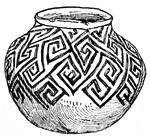
Mexican (Tusayan) Jar
Tusayan jar (Mexico) sketched in the American Museum of Natural History in New York.
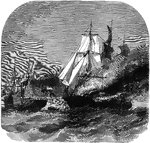
Harvey Birch
"Burning of the American merchantman "Harvey Birch," of New York, Captain Nelson, in the British Channel,…

General Gordon Granger
"General Granger, born in New York, in 1821, died in Santa Fe, N. M., January 10th, 1876, was graduated…
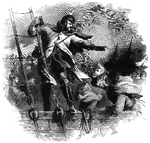
Burnside Expedition
"Burnside Expedition- the fleet and transports off Hatteras during the storm- the general giving orders.…

Major Taylor
"Escorting Major Taylor, of New Orleans, the bearer of a flag of truce, blindfolded, to the Confederate…
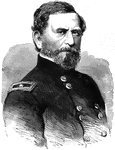
J. T. Sprague
"General J. T. Sprague, born in Newburyport, Mass., July 3rd, 1810, died in New York city, September…

Second Naval Battle
"Second naval battle in Hampton Roads- fight between the Federal ironclad Monitor, of two guns,…
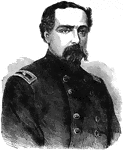
Edward Ferrero
"General Edward Ferrero was born in Granada, Spain, January 18th, 1831. His parents were Italian, and…
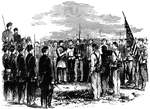
Seventy-ninth Regiment
"Taking away the colors of the Seventy-ninth New York Regiment for insubordination and mutiny, Washington,…

Zouaves
"Encampment of Colonel Ellsworth's New York Fire Zuoaves, on the heights opposite the Navy Yard, Washington,…
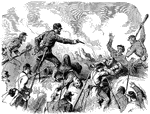
Lieutenant Colonel Morrison
"Heroic conduct of Lieutenant Colonel Morrison, Seventy-Ninth New York Highlanders, on the parapet of…

Ellsworth's Zouaves
"The departure of Colonel Ellsworth's Zouaves from New york, escorted by the fire department- the regiment…
Hilton Head
"Expedition to Port Royal- Government buildings erected on Hilton Head, S. C., by the Federal forces…

Battle of Secessionville
"Battle of Secessionville, James Island, S. C.- bayonet charge of Federal troops, commanded by General…
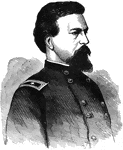
General Alexander S. Webb
"General Webb, born in New York city, February 15th, 1835, was graduated from the United States Military…

Schooners
"Removing sunken schooners from Core Sound, N. C., placed to obstruct the passage of the Federal gunboats,…

New Fernandina
"Federal troops marching through Second Street, New Fernandina, Fla. Our sketch of New Fernandina in…

Port Royal Ferry
"Successful attack of a detachment of the Federal forces, under General Stevens, supported by four gunboats…

Fort Runyon
"Section of Fort Runyon, Va., guarding the road to Alexandria, occupied by the Twenty-first Regiment,…

State Prisoners at Fort Lafayette
"Landing state prisoners at Fort Lafayette, New York harbor, in 1861. Fort Lafayette, New York harbor,…
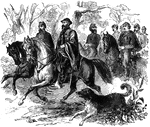
Battle of Pea Ridge
"General Asboth and staff at the Battle of Pea Ridge, Ark., March 6th-8th, 1862. The gallantry displayed…
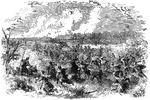
Battle of Roanoke Island
"Battle of Roanoke Island, February 8th, 1862- decisive bayonet charge of the Ninth New York Volunteers…

Burning of York
"A detachment of United States sailors from the gunboats Albatross and Gemsbok burning…

